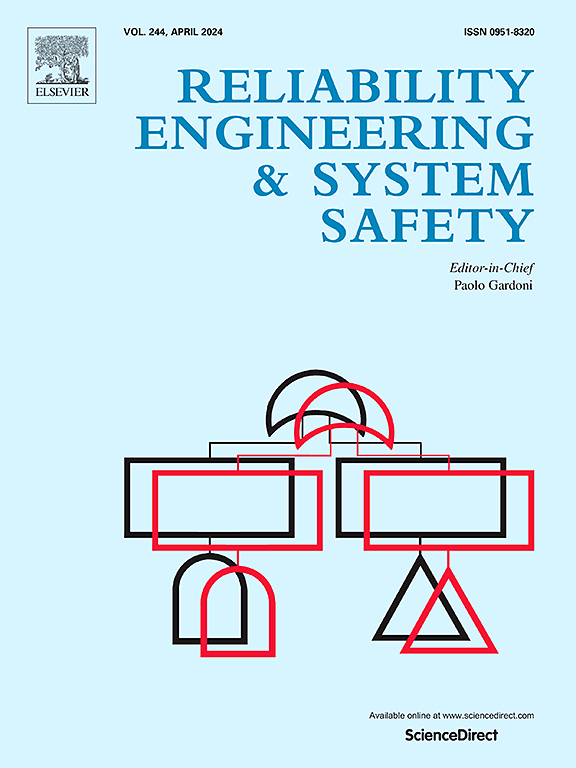Modeling urban transportation safety resilience under extreme rainstorms: A catastrophe theory approach
IF 11
1区 工程技术
Q1 ENGINEERING, INDUSTRIAL
引用次数: 0
Abstract
Extreme rainstorm disasters severely affect urban transportation safety. To scientifically assess urban transportation safety resilience (UTSR1) and its evolutionary process under extreme rainstorm disasters, this study proposes a novel assessment method by modeling the UTSR using the catastrophe theory approach. First, a safety framework for the urban transportation system is constructed, and catastrophe theory is applied to analyze catastrophic effects on the system. Second, factors affecting UTSR are identified, and their relationships are analyzed using a stock and flow model. Finally, the effectiveness of the UTSR dynamic simulation model is analyzed using the case study of an extreme rainstorm event in Xi'an, China. The results reveal that increasing the investment levels of government regulation effort (GRE2), information synergy degree (ISD3), and municipal drainage effectiveness (MDE4) leads to modeled increases in UTSR levels by 59.44%, 50.18%, and 16.79%, respectively. The results demonstrate that strengthening GRE and ISD significantly enhances UTSR, while MDE has a relatively minor impact. This study contributes a new theoretical perspective and practical modeling tool for capturing abrupt resilience transitions, offering detailed management strategies for enhancing UTSR when facing extreme rainstorms.
极端暴雨条件下城市交通安全弹性建模:一种突变理论方法
极端暴雨灾害严重影响城市交通安全。为了科学评价极端暴雨灾害下城市交通安全恢复力及其演化过程,本文提出了一种基于突变理论的城市交通安全恢复力评价方法。首先,构建了城市交通系统的安全框架,并运用突变理论分析了突变对系统的影响。其次,确定了影响UTSR的因素,并利用存量-流量模型分析了它们之间的关系。最后,以西安一次极端暴雨为例,分析了UTSR动态模拟模式的有效性。结果表明,增加政府监管力度(GRE2)、信息协同度(ISD3)和城市排水效能(MDE4)的投资水平,可导致模型中的UTSR水平分别增加59.44%、50.18%和16.79%。结果表明,强化GRE和ISD显著提高了UTSR,而MDE的影响相对较小。本研究为研究弹性突变提供了新的理论视角和实用的建模工具,并为应对极端暴雨时提高UTSR提供了详细的管理策略。
本文章由计算机程序翻译,如有差异,请以英文原文为准。
求助全文
约1分钟内获得全文
求助全文
来源期刊

Reliability Engineering & System Safety
管理科学-工程:工业
CiteScore
15.20
自引率
39.50%
发文量
621
审稿时长
67 days
期刊介绍:
Elsevier publishes Reliability Engineering & System Safety in association with the European Safety and Reliability Association and the Safety Engineering and Risk Analysis Division. The international journal is devoted to developing and applying methods to enhance the safety and reliability of complex technological systems, like nuclear power plants, chemical plants, hazardous waste facilities, space systems, offshore and maritime systems, transportation systems, constructed infrastructure, and manufacturing plants. The journal normally publishes only articles that involve the analysis of substantive problems related to the reliability of complex systems or present techniques and/or theoretical results that have a discernable relationship to the solution of such problems. An important aim is to balance academic material and practical applications.
 求助内容:
求助内容: 应助结果提醒方式:
应助结果提醒方式:


